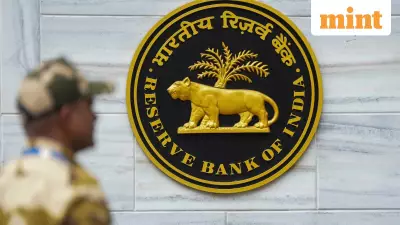
Parel Housing Societies Allege Open Space Violations by SRA
Residents of six housing societies in Parel's Bhoiwada area have raised serious allegations against the Slum Rehabilitation Authority (SRA) for allegedly violating the Bombay High Court's mandatory 35% open space rule. The controversy centers around the Matoshree scheme, where recreational grounds originally reserved under the city's Development Plan are being converted into buildable plots.
The Shrinking Open Spaces: A Timeline of Violations
The dispute traces back to 2011 when the SRA first proposed constructing 3,523 housing units on a land parcel with a gross area of 71,687 square metres. Following Brihanmumbai Municipal Corporation's Development Plan regulations, 16,714 square metres (23.3%) was reserved for common open space at that time.
By 2014, the project underwent significant changes when authorities incorporated adjoining land parcels. The overall gross area expanded to 1.03 lakh square metres, while the reserved open space increased to 25,376 square metres (24.5%). The number of proposed housing units also rose to 3,745 units during this phase.
The most dramatic change occurred in 2019 when further amalgamation of land increased the gross area to 1.07 lakh square metres. However, the open space reservation saw a sharp decline to just 8,816 square metres (8.16%), while the number of proposed tenements jumped to 4,534 units.
Bombay High Court's Clear Directive
This reduction directly contradicts the Bombay High Court's June 20 order, which explicitly mandated that all SRA projects must designate 35% of the plot size for open spaces and gardens. The court had specified that within 90 days of obtaining occupation certificate, this open space must be handed over to civic bodies for management.
The High Court bench had emphasized that no portion of the open space shall be reserved exclusively for any private group, resident association, or developer. The court also directed the state government and SRA to form a dedicated committee or appoint a senior officer to oversee implementation of this regulation and submit quarterly reports.
Residents' Struggle and Legal Battle
Prabhakar Awalegaonkar, a resident of one of the six affected societies, expressed the community's frustration. "Initially, the housing towers built by SRA were sold to us with promises of open spaces. However, it has been several years since we moved into our homes, but the open spaces are yet to take shape," he told The Indian Express.
Awalegaonkar detailed the status of five Recreation Garden plots: RG 1 is located at the top of a cliff and not easily accessible, RG 2 is being sold to a new builder after the original contractor went bankrupt, RG 3 has construction work underway for new housing tenements, while RG 4 and RG 5 are reserved for building housing tenements for Project Affected Parties.
Rohan Shah, another resident and petitioner in the case, revealed they have been fighting this battle since 2019. "The original land was filled with encroachment and given to SRA for building housing tenements. Over time, the built-up area and number of housing tenements increased, but recreational grounds decreased substantially. We have been fighting this case for more than six years now," Shah stated.
The residents have now escalated their fight by filing a writ petition in the Bombay High Court. Despite initially approaching NGOs and sending legal notices to both SRA and BMC, no concrete action has been taken so far.
When contacted for comments, SRA CEO Mahendra Kalyankar refused to respond to the allegations. Meanwhile, a BMC ward office official shifted responsibility, stating that since the BMC doesn't own the land, the onus rests entirely with SRA until project completion.
The case highlights the ongoing tension between urban development needs and the preservation of essential open spaces in Mumbai's rapidly changing landscape, with Parel residents determined to protect their right to recreational areas as guaranteed by both city planning norms and judicial directives.





